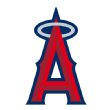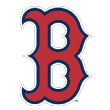It’s early. Very, very early. But that doesn’t stop us from beginning to track the MVP and Cy Young races. There are some surprise names at the top of the list, along with some of the usual suspects. We’re here to offer up the top three contenders for each award, plus an early dark horse to keep an eye on through the end of April. Argue and debate all you wish -- we plan to revisit this at the start of each month -- but remember, we’ve got a long, long way to go.
NL MVP
 Ryan Zimmerman, Nationals
Ryan Zimmerman, Nationals
Zimmerman can actually make a better case than Bryce Harper, which is almost unthinkable given how unhealthy Zimmerman was last season.
Through the end of April, Zimmerman had Harper beat in batting average (.420 to .391) and slugging percentage (.886 to .772). His 29 percent hard-hit rate is the best in baseball.
Though Harper has a slight edge in Win Probability Added, Zimmerman has been better in what Baseball-Reference dubs “Late and Close” situations (tie game, up one or having the tying run at least on deck in seventh inning or later). He’s 5-for-11 in those spots with four home runs. Harper is 5-for-12 with one home run and four walks.
“He was my pick to click when the year started,” Nationals manager Dusty Baker said. “Look at his track record when he’s healthy. He’s not old, and he didn’t get heavy around the midsection. It wasn’t that hard [a pick].”
 Bryce Harper, Nationals
Bryce Harper, Nationals
The Zimmerman/Harper tandem is one that could rival Chicago's duo of Kris Bryant and Anthony Rizzo circa 2016.
Right now, we have Harper playing the role of Rizzo, but what a run it has been.
Harper had a .391/.509/.772 slash line in 114 plate appearances in April. Only two players have had that high of an on-base percentage in that many plate appearances in April since 2000 -- Darin Erstad (.512 in 2000) and Albert Pujols (.523 in 2008). Neither was within 150 points of Harper’s slugging percentage, however.
The thing that’s keeping Harper’s value down slightly is his defense and baserunning, which has been worth a combined minus-2 runs. But when you’re hitting like Harper has been, that’s forgivable. As for the former, he has twice put up 10 defensive runs saved in a season, so it’s not impossible that he could be great there, as well.
My ESPN Stats & Information colleagues Riley Foreman and Brett Perrotta also pointed this out: The Nationals went 16-2 in April when Harper got at least one hit. They were 1-6 when he was held hitless.
 Eric Thames, Brewers
Eric Thames, Brewers
It’s as if Thames never left Korea. The Brewers slugger hit .345/.466/.810 with a club-record 11 home runs in the month of April. Thames has the fifth-lowest chase rate in the majors, one comparable to gritty contact hitters such as Joe Panik, which means he’s saving his big hacks for the best pitches. And as we detailed, when he gets his best pitch, he crushes it.
 Freddie Freeman, Braves (Dark Horse)
Freddie Freeman, Braves (Dark Horse)
Chipper Jones said Freeman will be a “perennial top-five MVP candidate” from here on out, and who are we to doubt him? Every success Freeman had at the end of 2016 has carried over to 2017 thus far. Freeman followed up a 2-for-17 stretch by hitting a video game-like .429/.538/952 with nine home runs in his last 18 April games. He’s single-handedly keeping the Braves' offense running.
AL MVP
 Mike Trout, Angels
Mike Trout, Angels
Fun with player paces: If we took Trout’s April production and prorated those numbers for the whole season, he’d finish with a .364/.443/.707 slash line, with 216 hits, 42 home runs, 54 doubles and a perfect 30-for-30 in stolen-base attempts. And 12.6 WAR, which would be better than all but every major league season, save for two by Babe Ruth.
As my colleagues Paul Casella and Meghan O’Donnell note, Trout has never had a start quite like this. His batting average, home runs (7), hits (36), RBIs (18), extra-base hits (18) and total bases (70) all were career highs for April.
 Francisco Lindor, Indians
Francisco Lindor, Indians
The Indians lead the AL Central, as expected, and though their best player in the WAR department has been Jose Ramirez (building off his 2016 metrics), Lindor is on his way to an amazing season, with a .306/.375/.622 slash line. He’s nearly halfway to his 2016 home run total of 15. The only thing holding his numbers back is on the defensive side. He finished with minus-2 defensive runs saved in April, which feels like a fluke given his combined 27 defensive runs saved over the past two seasons and his 2016 Gold Glove.
 Aaron Judge, Yankees
Aaron Judge, Yankees
Judge’s numbers in 12 April games at Yankee Stadium are off the charts -- a .382/.488/1.059(!) slash line with seven home runs in 41 at-bats. The Yankees rookie is playing in the perfect ballpark for his power. Whether Judge has any staying power on this list will depend on whether he hits outside of the Bronx (.231/.302/.513). But for now it’s a fun story, not just for the Yankees, but for wordsmiths who like the many puns his last name provides.
 Mitch Haniger, Mariners (Dark Horse)
Mitch Haniger, Mariners (Dark Horse)
This is admittedly a ridiculous choice, given that the Mariners have been bad and Haniger has been hurt (out with a strained oblique), but consider what he has done: He leads the AL with a .447 on-base percentage, is slugging .608, and has lived up to expectations with five defensive runs saved. We might be laughing about his inclusion here come September, but for now he’s one of the game’s best surprise stories this season.
NL Cy Young
 Mike Leake, Cardinals
Mike Leake, Cardinals
Mike Leake? Really? Yes, definitely. Leake has the best ERA (1.35) and second-best FIP (1.97) among NL starters (he trails the New York Mets' Noah Syndergaard). The biggest positive for him is that he hasn’t allowed a home run in five starts this season after having allowed at least 20 in each of the past six seasons. Leake is doing a better job keeping the ball down than usual, and the Cardinals have turned 82 percent of his batted balls into outs, compared to 70 percent last season.
 Clayton Kershaw, Dodgers
Clayton Kershaw, Dodgers
You knew he’d be here, and he’ll probably top the list in May, June, July, August and September. In four of his six starts, Kershaw has looked a lot like the pre-injury Kershaw -- economical in his pitches and pitching with minimal damage. The only concern is that his slider isn’t all the way back. He has allowed three hits with it in each of his past three starts (he had a 5-start stretch last season in which opponents were 0-for-46 against it). We’re guessing he’ll figure out how to make it work, Monday's start notwithstanding.
 Jacob deGrom, Mets
Jacob deGrom, Mets
DeGrom is the one Mets pitcher who doesn’t seem to have any issues, though remember he did have elbow surgery last season. DeGrom leads the NL in strikeouts, averaging 12.5 K's per nine innings. What has been most impressive about deGrom is that just when it looks like he’s in trouble, he locks in. He has allowed seven runs in the first two innings of his five starts, but only three runs after the second inning.
 Ivan Nova, Pirates (Dark Horse)
Ivan Nova, Pirates (Dark Horse)
Since being obtained by the Pirates, Nova has five complete games and four walks (a 2-to-1 ratio this season). He leads the NL with an 0.75 WHIP. The question is whether or not this stretch of success can be sustained. Nova’s current hard-hit rate is 19 percent, which ranks 88th among the 108 ERA-title qualifiers. Opponents are 13-for-25 when recording a hard-hit ball against him. That is atypically low (most pitchers will allow 17 of 18). The percentages could catch up with him.
AL Cy Young
 Ervin Santana, Twins
Ervin Santana, Twins
The lessons learned at the end of last season have paid off for Santana, who has been the game’s dominant pitcher, with an 0.77 ERA. Elias research shows he’s the only pitcher to begin a season with five straight starts allowing no more than one run and four hits, since the mound moved to 60 feet, 6 inches in 1893. This might not be a fluke. Santana had a 2.41 ERA in his last 18 starts in 2016.
 Dallas Keuchel, Astros
Dallas Keuchel, Astros
As long as Keuchel can keep the ball at the bottom of the strike zone like he has for the first month, he’s likely to be quite successful. His current run is unprecedented. Keuchel is the first pitcher in Astros history to begin a season with six straight starts of at least seven innings and no more than two runs allowed.
 Chris Sale, Red Sox
Chris Sale, Red Sox
Through his first five starts with the Red Sox, Sale is looking Kershawian, with 52 strikeouts, six walks and one home run allowed. It has been Sale’s fastball that is popping, averaging 94 mph; his miss rate (28 percent) with it is back up to 2015 levels (remember, he took some velocity off the pitch in 2016). And now that he has catchers who can handle his stuff, Sale's called strike rate with his fastball (41 percent) is in line to be considerably higher than it was during his White Sox days.
 Jason Vargas, Royals (Dark Horse)
Jason Vargas, Royals (Dark Horse)
We could have easily tabbed James Paxton here, but Vargas’ story is slightly more interesting. After making 12 starts in the previous two seasons, Vargas was great in his first three starts, faltered in his fourth, but then bounced back with a strong start to open May. A great changeup is what propelled it -- the most valuable one in baseball in April per Fangraphs’ run values.
